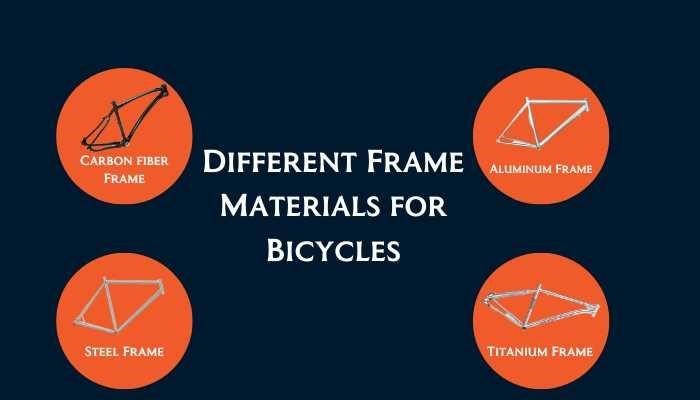What Bicycle Should I Get?

Choosing the right bicycle is essential for a safe, comfortable, and enjoyable ride. If you are looking to get a bicycle, you should consider your individual needs and goals as a rider. And choose a bicycle that meets those requirements.
With so many options on the market, it can be overwhelming to choose the right bicycle for your needs. There are different types of bicycles. They include-
- Road bikes
- Mountain bikes
- Hybrid bikes
- Commuter bikes
- Folding bikes, etc.
Hence, this article aims to provide guidance on the factors you should consider when deciding what bicycle to get, to help you make an informed decision and get the most out of your cycling experience.
Types of Bicycles
There are several types of bicycles available in the market, each designed to cater to specific riding styles and terrain.

Below are the most common types of bicycles:
- Road Bikes
Road bikes are designed for fast, efficient riding on smooth, paved roads. They typically have narrow tires, lightweight frames, and drop handlebars that allow riders to maintain an aerodynamic position.
Road bikes are ideal for long-distance rides, racing, and fitness cycling.
- Mountain Bikes
Mountain bikes are built to handle rough terrain, such as rocky or steep trails. They have wider tires, more suspension, and a heavier frame, which provides stability and control on uneven surfaces.
Mountain bikes are perfect for off-road adventures, such as mountain biking, trail riding, and downhill cycling.
- Hybrid Bikes
Hybrid bikes combine features of both road and mountain bikes, making them versatile and suitable for a wide range of riding styles. They have wider tires than road bikes and more upright handlebars than mountain bikes, offering a comfortable riding position.
Hybrid bikes are ideal for commuting, recreational riding, and light off-road adventures.
- Commuter Bikes
Commuter bikes are designed for riders who want to use their bikes as a primary mode of transportation, such as commuting to work or running errands.
They typically have features such as fenders, racks, and lights, making them practical and convenient for daily use.
- Folding Bikes
Folding bikes are compact, lightweight, and easy to store, making them ideal for riders who have limited space or need to transport their bikes frequently.
They are designed with a folding frame, which allows them to be easily packed in a car trunk, carried on public transportation, or stored in a small apartment.
Additionally, choosing a bike that aligns with your purpose can save you money in the long run. If you buy a bike that is not suited to your intended use, you may end up needing to purchase additional accessories or even a new bike to accommodate your needs.
Fit and Comfort
Considering fit and comfort is essential when choosing a bicycle because an ill-fitting bike can be uncomfortable to ride and may even cause pain or injury over time.
If a bike doesn’t fit you properly, it can lead to problems such as back pain, knee pain, and numbness in the hands or feet. A poorly fitting bike can also affect your balance and control, making it more difficult to ride safely.
Comfort is also important because it can affect how often you ride your bike. If a bike is uncomfortable, you may be less likely to ride it regularly, which can make it harder to achieve your fitness or transportation goals.
A comfortable saddle, padded grips, and shock-absorbing features can also help make your ride more comfortable.
What Bicycle Should I Choose?
When choosing a bicycle, there are several factors you should consider to ensure that you select the right bike for your needs. If you do not consider these factors, you may not find a suitable bicycle for your everyday ride.
Here are the most important factors to keep in mind –
Purpose of the Bicycle
Knowing the purpose of a bicycle before buying it is important because different types of bicycles are designed for different riding styles and terrain. For example, a road bike is designed for fast, efficient riding on smooth, paved roads, while a mountain bike is built to handle rough terrain and steep trails.
By understanding your intended use for the bike, you can choose a type of bicycle that will best suit your needs.

Additionally, choosing a bike that aligns with your purpose can save you money in the long run. If you buy a bike that is not suited to your intended use, you may end up needing to purchase additional accessories or even a new bike to accommodate your needs.
Fit and Comfort
Considering fit and comfort is essential when choosing a bicycle because an ill-fitting bike can be uncomfortable to ride and may even cause pain or injury over time.
If a bike doesn’t fit you properly, it can lead to problems such as back pain, knee pain, and numbness in the hands or feet. A poorly fitting bike can also affect your balance and control, making it more difficult to ride safely.
Comfort is also important because it can affect how often you ride your bike. If a bike is uncomfortable, you may be less likely to ride it regularly, which can make it harder to achieve your fitness or transportation goals.
A comfortable saddle, padded grips, and shock-absorbing features can also help make your ride more comfortable.
Frame Material

Different frame materials offer different advantages and disadvantages, and choosing the right one for your needs can impact your riding experience. Here are some of the most common materials used to make bike frames –
- Aluminum: Aluminum is a lightweight and relatively inexpensive material that provides a good balance of stiffness and durability. Aluminum frames are commonly found on entry-level to mid-range bikes.
- Carbon fiber: Carbon fiber is a high-tech material that is incredibly lightweight and strong. Carbon fiber frames are commonly found on high-end road and mountain bikes and offer superior performance and stiffness compared to other materials.
- Steel: Steel is a traditional bike frame material that is strong, durable, and relatively inexpensive. Steel frames are commonly found on touring, commuting, and vintage-style bikes. They are heavy, too.
- Titanium: Titanium is a lightweight and durable material that offers a smooth and comfortable ride. Titanium frames are relatively expensive and are commonly found on high-end road and mountain bikes.
Choosing the right frame material for your needs depends on factors such as your riding style, budget, and performance requirements. For example, carbon fiber may be the best choice if you’re looking for a lightweight bike for racing or performance riding.
If you’re looking for a durable and comfortable bike for commuting or touring, steel or titanium may be a better option.
Components
Another essential sector is like others. Components refer to the parts that make up the bike, including the drivetrain, brakes, wheels, and suspension (if applicable).
Considering the components is essential when choosing a bike because they can significantly impact the bike’s performance and overall quality.
Higher-end components may provide better performance, durability, and reliability, but may also come at a higher cost. It’s important to balance your needs and budget when choosing a bike and its components.
Tips for Choosing the Right Bicycle
Choosing the right bicycle can be a daunting task, but with the right guidance and knowledge, you can find a bike that meets your needs and provides an enjoyable riding experience.
Test Ride Several Bicycles
Here are some of the major reasons why you need to test ride several bicycles before buying one –
- Test riding several bicycles can help you compare and contrast different models and find the one that best fits your needs, riding style, and comfort preferences.
- It can help you compare and contrast different models and find the one that best fits your needs, riding style, and comfort preferences.
- You can get a better understanding of what feels comfortable and enjoyable to ride, and what features or components you may prefer or dislike.
- Additionally, test-riding several bicycles can help you make a more informed decision when choosing a bike.
Consult with a Bicycle Specialist
Consulting a bicycle specialist before buying a bicycle is essential because they can provide expert advice and help you make an informed decision that meets your individual needs and goals.
- Bicycle specialists can help you understand the different types of bicycles available and the specific features and benefits of each one as they are trained professionals.
- They can also help you choose the right size and fit for your body type and riding style, ensuring that you are comfortable and safe on your new bicycle.
- Moreover, bicycle specialists can help you navigate the range of available options and find a bicycle that fits your budget and riding goals.
- They can provide recommendations on different brands and models based on your preferences and budget, and they can also help you prioritize features and components that are important to you.
Frequently Asked Questions
1.What Type of Bicycle Should I Get If I plan to Ride on Roads and Paved Surfaces?
If you plan to ride on roads and paved surfaces, a road bike is likely the best option. Road bikes are designed for speed and efficiency on smooth, paved surfaces and feature lightweight frames and narrow, high-pressure tires that minimize rolling resistance.
They typically have drop handlebars, which provide multiple hand positions to maximize comfort and control while riding.
- Should I Get a Mountain Bike or a Road Bike for Off-Road Trails?
If you plan to ride off-road trails, a mountain bike is the better choice. Mountain bikes are specifically designed to handle rough terrain and obstacles, with features such as suspension, wider tires with deeper treads, and a more upright riding position that provides better visibility and control.
- Are Hybrid Bikes Good Option for Casual Riders?
Yes, hybrid bikes are a great option for casual riders who want a comfortable and versatile bike that can handle a variety of riding conditions.
Hybrid bikes combine the features of road bikes and mountain bikes to create a bike that is suitable for commuting, recreational riding, and light off-road riding.
Final Thoughts
Choosing the right bike is a crucial decision for riders. Understanding your purpose, fit, frame material, components, and budget are vital considerations.
Test ride several bikes, consult with a specialist and research online before making a purchase. Ultimately, the best bike for you depends on your individual preferences and needs.
What bicycle should I get? The one that fits you and your riding goals the best.